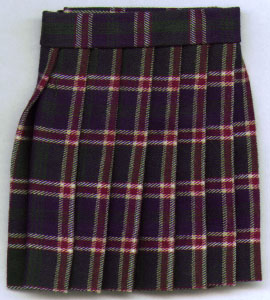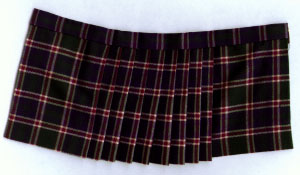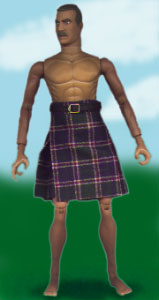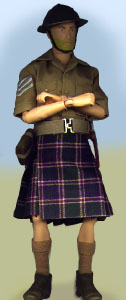MacJoe Home
Photos of Handmade 1:6 Scale Kilts
About GI MacJoe Handmade Kilts
When I made them, all my kilts were made by hand from genuine shirt cloth. I carefully selected only the finest shirts, choosing those with the best small-scale plaid patterns. I used cotton fabric and a heat-activated cloth glue to ensure that the kilt's knife pleats stayed sharp.

Above is the front of a wee kilt. Note that, in the front, the kilt presents a flat panel that crosses from left to right across the thighs.

Above is a back view of a wee kilt. You can see the pleats across the back. On a full-size kilt, the pleats are roughly one hand-width deep. The wee kilt maintains that ratio, with each pleat running about the width of a 12" figure's hands. When your Joe wears his wee kilt, the pleats will drape like the real thing.

Above is a wee kilt, unfolded. The roughly 8" length gives the wee kilt enough overlap to fit comfortably on all 12" figures, from the narrow-waisted 21st Century Ultimate Soldier to the more meaty Vintage/Elite Brigade body.
 | Here Sam models his wee kilt to show the proper fit. Kilts are worn slightly higher on the waist than slacks or shorts, and the bottom of the kilt should roughly bisect the knees. The old joke asks, "What do you wear beneath a kilt?" The answer? Simple. Socks and shoes. Sam here needs some footwear! |
 | Here Zach, an Elite Brigade WWII British SAS desert commando, shows how to wear a wee kilt with other clothes. Shirts should be tucked into the kilt. And beneath the kilt, it is traditional to wear tall socks with a roll on the calf. |
